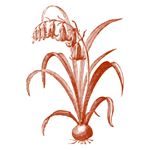As we arrive in midlife, we find that the goals, dreams, and convictions that guided our lives to this point aren’t always a reliable compass to help us navigate this new life stage – a life stage that can be full of shifting shadows and unexpected dead ends.
A faith that once seemed as certain as the North Star in our lives may seem less clear. It may carry more questions. While this is a sign of growth toward maturity, this journey into the darkness can leave us disoriented and disappointed. And while the practices that carried us during the first half of our lives can sustain our faith, many find that simply redoubling their efforts exhaust rather than revive them.
I’ve recently read a pair of books that offer readers meaningful pathways that can help them experience their faith in new – and very old – ways. While not specifically addressing issues of midlife, both of these titles from InterVarsity Press are brimming with life-giving counsel:

The first, Christine Aroney-Sine’s The Gift of Wonder: Creative Practices for Delighting in God suggests that childlike traits including play, awe, curiosity, compassion, love of nature, and trust best exemplify what it is to be a member of the kingdom of God. She invites readers to reclaim those childlike traits as a way to renew their first love for Jesus. Fourteen chapters detail the why behind various facets of a mature childlike faith, and contain direction and inspiration for a delight-directed exercise individuals and groups can use to ignite wonder in God.
The chapter on imagination is a good example. Sine quotes Russian philosopher Nikoali Berdyaev, who said, “God creates the world by imagination” as the foundation for her exposition. She writes,
“Imagination and creativity are at the core of who God is and who God created us to be. Our job is to learn to take notice of what our imaginations are observing, processing, and expressing, just as kids do.”
She cites examples of imaginative prayer and worship that include both devotional and justice elements, as imagination often precedes action. The exercise closing the chapter includes an individual “deep read” of a new or favorite children’s story and a collaborative group exercise reading and re-telling a story from Scripture with the idea that it could become a book to share with little ones.

The second book I’m commending for those in a season of disorientation is When Faith Becomes Sight: Opening Your Eyes to God’s Presence All Around You. Veteran spiritual directors Beth and David Booram help us to discover – or rediscover – God’s nearness. Understanding a theological truth like God is immanent (dwelling within, near) is one thing. Experiencing this as orienting reality, particularly when life feels dark and confusing, another.
The book is organized in three sections: recognizing the signs of God, discovering our unconscious and conscious lenses through which we view God, and going deep in order to listen to him and ourselves. A couple of reviewers noted that When Faith Becomes Sight is a modern-day The Practice of the Presence of God, the 17th century spiritual classic penned by Brother Lawrence. It is that, but it goes beyond the scope of that book by including insights gleaned from the companioning work the Boorams have done through the years and the thoughtful and gently provocative encouragement to push beyond our rationalistic habits of believing what our eyes can see and minds can comprehend. This coaching is especially relevant to those of us who find ourselves in the darkness of midlife.
“So what exactly is going on as we journey through these dark night experiences? On one hand, since it obscures the activity of God, there is likely much we won’t understand. It is God’s private business to do the night work in the depths of our souls. Even though we’d prefer to be in control of our lives, there’s something strangely comforting and freeing to know that God is at work beyond to reform ourselves. But knowing a bit about the procedure we are undergoing can help us settle in and not resist this mysterious process.”
Each of the book’s 15 chapters ends with a series of reflection questions that can move the material from page to a living experience in your life. We often live from sight to (maybe) faith in this world. The Boorams work reminds us that the kingdom of God works in the opposite manner.
Though I doubt the publisher imagined these books would make a wonderful pair, I thought of this community as I read both. If you read one or both, I’d love to hear your thoughts on the books. And if you’re looking for a meaningful way to begin your new year, one or both of these books may belong in your “to read” stack.





Thank you for these recommendations!
“. . . a life stage that can be full of shifting shadows and unexpected dead ends . . . A faith that once seemed as certain as the North Star in our lives may seem less clear. It may carry more questions. While this is a sign of growth toward maturity, this journey into the darkness can leave us disoriented and disappointed. And while the practices that carried us during the first half of our lives can sustain our faith, many find that simply redoubling their efforts exhaust rather than revive them.”
Oh my! This is exactly where I’m at – especially the last line. I think I’m a bit past “midlife” having just turned 65 and now collecting Social Security, but this really touched me where I’ve been for the last 2-3 years. I will definitely be checking into these books.
Thank you so much, Michelle!